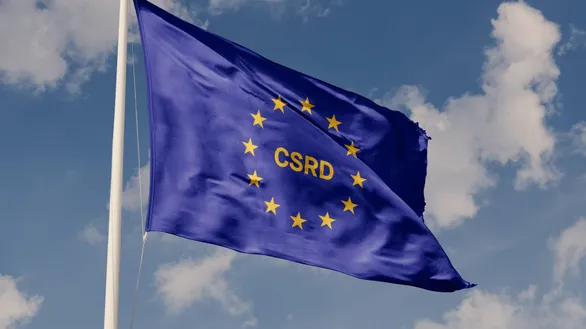The Kunming Montreal Global Biodiversity Framework is an international agreement that aims to set new targets and actions to halt biodiversity loss and restore nature. Here’s what businesses need to know about it.
The framework was adopted at the 15th Conference of the Parties (COP15) to the Convention on Biological Diversity (CBD) in Kunming, China. It’s been named "The Paris Agreement for Nature".
The framework builds upon the previous strategic plan known as the Aichi Biodiversity Targets, which guided global biodiversity conservation efforts from 2011 to 2020. While some progress was made under these targets, it is evident that greater action is necessary to safeguard biodiversity and ensure the sustainable use of natural resources.
What are the key objectives of The Kunming Montreal Framework?
The Kunming-Montreal Global Biodiversity Framework consists of four global goals known as the Kunming-Montreal Global Goals for 2050 and 23 targets referred to as the Kunming-Montreal 2030 Global Targets.
The four goals of the framework are as follows:
1. Ecosystem integrity
-
Increase the area of natural ecosystems substantially by 2050.
-
Halt human-induced extinction of threatened species.
-
Reduce extinction rates and risks for all species by tenfold.
-
Increase the abundance of native wild species to healthy and resilient levels.
-
Safeguard the genetic diversity in the natural world, within populations of wild and domesticated species.
2. Biodiversity protection
-
Value, maintain, and enhance nature's contributions to people, including ecosystem functions and services.
-
Protect biodiversity by restoring ecosystem functions and services currently in decline (both terrestrial and marine areas).
-
Support sustainable development for the benefit of present and future generations by 2050.
3. Fair and equitable sharing of genetic resources
-
Share monetary and non-monetary benefits derived from genetic resources and digital sequence information.
-
Ensure fair and equitable sharing, including with indigenous peoples, local communities, and stakeholders.
-
Increase the sharing of benefits while appropriately protecting traditional knowledge associated with genetic resources.
-
Contribute to the conservation and sustainable use of biodiversity in line with international access and benefit-sharing instruments.
4. Adequate means of implementation
-
Secure the necessary means, including financial resources, capacity-building efforts, technical and scientific cooperation, and technology access and transfer.
-
Implement the Kunming-Montreal global biodiversity framework comprehensively.
-
Ensure these means are accessible to everyone involved, particularly developing countries, least developed countries, small island developing States, and countries with economies in transition. Also paying particular attention to accessibility for indigenous communities.
-
Progressively close the biodiversity finance gap of $700 billion per year and align financial flows with the framework and the 2050 Vision for Biodiversity.
For the full list, see the official framework document.
What is the 30 x 30 target?
The ambitious '30 x 30' target lies at the center of the Kunming Montreal Framework. It aims to effectively conserve at least 30% of the world's lands, inland waters, coastal and marine areas, as well as restoring 30% of degraded terrestrial and marine environments. This target recognizes the critical importance of protecting and restoring natural ecosystems for the preservation of biodiversity and the mitigation of climate change.
The 30×30 target for conserving terrestrial and marine areas represents a significant step forward in addressing emissions from land-use change, combating global warming and expediting the transition to a Net Zero future. By protecting and restoring vital ecosystems, we not only safeguard biodiversity but also contribute to mitigating climate change and creating a sustainable future for all.
What are some of the framework’s key targets?
Below is a selection of the 23 targets for 2030 outlined by the framework:
1. Reduce global food waste and consumption
-
Achieve a 50% reduction in global food waste.
-
Significantly decrease over-consumption and the generation of waste.
2. Enhance chemical and nutrient management
-
Reduce excess nutrients and the overall risk posed by pesticides and highly hazardous chemicals by 50%.
3. Reform harmful subsidies and promote positive incentives
-
Phase out or reform subsidies that harm biodiversity, aiming for a reduction of at least $500 billion per year.
-
Scale up positive incentives that support biodiversity conservation.
4. Mobilize funding for biological diversity
-
Encourage the allocation of at least $200 billion per year in domestic and international funding for biodiversity-related initiatives from public and private sources.
5. Foster financial support for developing countries
-
Increase international financial flows from developed to developing countries by a minimum of $20 billion per year by 2025.
-
Aim for a further increase to at least $30 billion per year by 2030.
6. Promote corporate responsibility and disclosure
-
Implement mandatory monitoring, assessment, and disclosure of the impact on biodiversity for transnational companies and financial institutions.
-
Ensure comprehensive evaluation of their operations, supply chains, and portfolios.
What is Target 15?
Target 15 within the framework calls for governments to enforce mandatory assessments and disclosure of risks, impacts, and dependencies on nature by large businesses and financial institutions. This target aligns with existing corporate reporting practices such as the CSRD and SFDR. Through its implementation, Target 15 seeks to foster a global culture of responsible environmental stewardship and contribute to the broader goals of the framework in safeguarding biodiversity and promoting sustainable practices worldwide.
What does Target 15 mean for businesses?
Target 15 of the Global Biodiversity Framework presents significant implications for businesses as they navigate the complexities of assessing their risks, impacts, and dependencies on nature. With the increasing focus on sustainability and the potential regulatory impacts, businesses must understand and address these challenges. The measurement of biodiversity is inherently complex, requiring a unified and credible standard to effectively report and disclose impacts. Efforts such as the Taskforce on Nature-related Financial Disclosures (TNFD) and Science Based Targets for Nature (SBTN) are working towards developing frameworks that enable organizations to set targets and report on their biodiversity responsibilities.
Although reporting on biodiversity impacts may not yet be mandatory, transparency and accountability are becoming increasingly important for businesses as part of their social license to operate. Consumers and investors are prioritizing companies that are transparent about their biodiversity impacts.
What does the Kunming Montreal Framework mean for responsible investment?
The Kunming-Montreal Global Biodiversity Framework not only offers a clear roadmap and targets for biodiversity conservation but also presents a compelling opportunity for responsible investors to align their investment strategies with sustainable practices. By incorporating biodiversity considerations into their investment decisions, investors can contribute to the preservation of ecosystems while promoting transparency and accountability within the financial sector. Importantly, regulatory frameworks are increasingly asking investors to report on their strategy and alignment regarding this global framework.
To effectively address biodiversity risks, investors should explore and invest in innovative financial solutions. These solutions can take various forms, such as impact investing, green bonds, sustainable funds, and nature-based investment opportunities. By directing capital towards projects and initiatives that prioritize biodiversity conservation, investors play a crucial role in mobilizing the substantial financial resources required to achieve the framework's goals.
Meeting the financial target of mobilizing US$200 billion per year by 2030 requires collaborative efforts between the public and private sectors. Responsible investors can actively support and participate in biodiversity-focused initiatives, forging partnerships with governments, international organizations, and conservation groups. By leveraging their financial expertise and resources, investors can help unlock private funding for biodiversity conservation projects and facilitate the transition to a more sustainable and nature-positive economy.
What are the impacts and benefits of The Kunming Montreal Framework?
The adoption and successful implementation of the Kunming Montreal Global Biodiversity Framework would yield numerous benefits for both nature and humanity:
Biodiversity conservation
By setting ambitious targets and actions to protect nature, the framework can significantly contribute to the conservation of species, habitats, and ecosystems worldwide. It provides a roadmap for countries to take immediate and transformative actions, protecting invaluable biodiversity hotspots and ensuring the survival of threatened species.
Sustainable development
Integrating biodiversity conservation into development planning promotes sustainable practices. The framework encourages the adoption of nature-based solutions, which can address environmental challenges while supporting social and economic well-being. This synergy between biodiversity conservation and sustainable development is crucial for achieving the United Nations' Sustainable Development Goals.
Climate change mitigation and adaptation
Biodiversity and climate change are closely interconnected. Healthy ecosystems play a vital role in absorbing and storing carbon dioxide, mitigating climate change impacts. Additionally, preserving biodiversity enhances ecosystem resilience, enabling ecosystems and communities to adapt to changing climatic conditions.
Economic opportunities
Biodiversity conservation with its focus on technical and scientific cooperation, presents economic opportunities. Investments in nature-based solutions, such as ecological restoration and sustainable agriculture, can generate green jobs, promote sustainable tourism, and foster innovation. The framework provides a platform for countries to explore these opportunities and build a more inclusive and green economy.
The framework also aims to close the biodiversity finance gap – the difference between the financial resources needed to effectively conserve and sustainably manage biodiversity and the actual funds available for these purposes.
Global action and collaboration
The Kunming Montreal Global Biodiversity Framework fosters international collaboration and cooperation. It encourages both developed and developing countries to share best practices, exchange knowledge, and support each other in implementing effective conservation strategies. Together, we can create a global community committed to protecting biodiversity and ensuring a sustainable future.
In summary
The Kunming Montreal Framework holds immense potential to address the global biodiversity crisis and pave the way for a more sustainable and resilient planet. Through its ambitious targets and actions, the framework aims to halt biodiversity loss, enhance ecosystem services, and promote fair and equitable sharing of benefits.
Find out how Sweep can help you take impactful climate action
Sweep is your all-in-one solution for carbon and ESG management. By using our platform you can:
-
Easily gather climate data from across your value chain
-
Model reduction scenarios and track your progress against targets
-
Track your compliance with the latest regulations, including the CSRD
Reach out to us to find out more.




